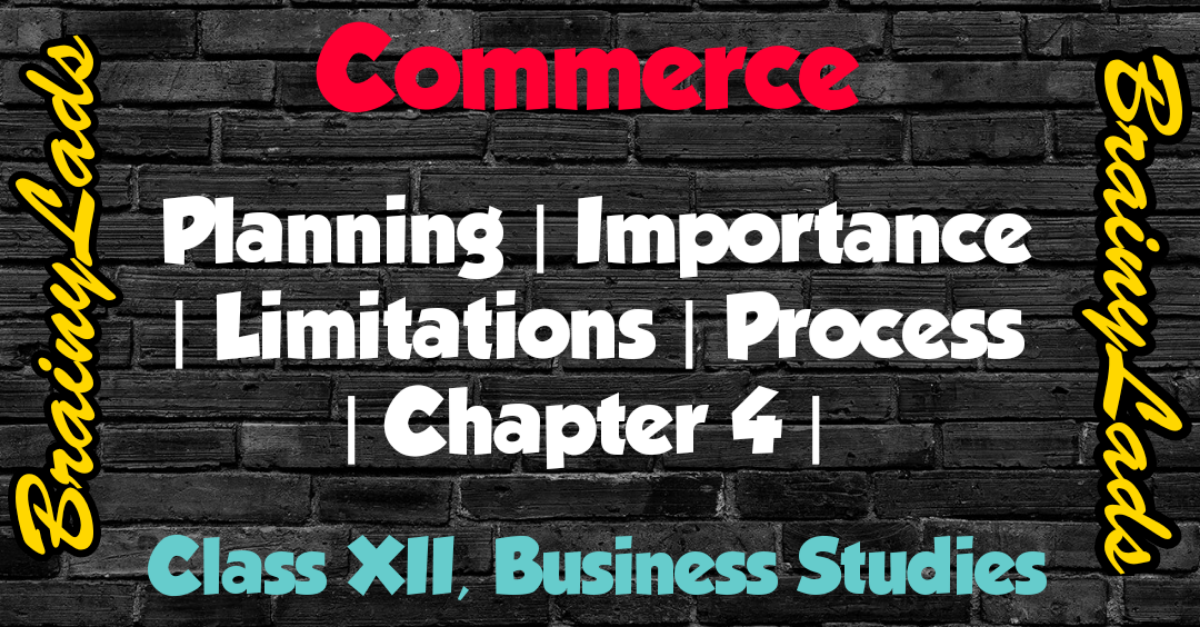Organising Class 12 Notes | Types | Decentralisation | Delegation |
Table of Contents
Organising Class 12 Notes | Types | Decentralisation | Delegation | Features | Chapter 5
Meaning and Concept of Organising
Organising Class 12 Notes : Organising is the function of management under which the job of an individual in an organisation is designed and all the activities of an organisation are grouped so that authority relationship can be established.
Two meaning of organising can be derived which are, Organising as a Process which cannot perform all the functions of management as an individual but it contains a chain of various functions which are done to get the objective achieved and secondly, Organising as a Structure of Relationship wherein organising is treated as a structure of relationship where various posts are designed and responsibility of each post along with authority is determined.
Features of Organising
- Division of Work: Under division of work, whole work is divided into small segments which are known as Departments and from those segments, work is sub-divided and allotted to all the employees on the basis of which organising function works.
- Plurality of Persons: Organisation is the group of many people who come together to fulfill a common objective. Therefore, an organisation cannot be created by an individual.
- Common Objective: There are various departments in an organisation which perform different functions but with a same objective to achieve it.
Significance of Organising
- Specialisation of Work: Under organising, work is divided into small jobs for which experts are hired to work which creates competition in an organisation that results in the specialisation of work.
- Working Relationship Clarity: With the division authority and responsibility, it gets specified that who can report to whom whereby communication becomes effective and working relationship of an organisation becomes clear.
- Effective Administrative: The organising process clears every activity of the manager along with authority which clears to managers that whom a manager can order for a job and to whom the manager is accountable or answerable.
- Growth and Expansion: The organising process allows all the employees, who are ready to face challenges, to take decision by which development of an organisation can also happen and it results in increasing the earning capacity.
- Adaptation to Change: Organising makes the organisation capable of adapting the changes which are connected with the post as in an organisation, there is a clear scalar chain of authority from top to bottom level wherein the vacant post can be filled up through promotions.
Process of Organising
For completion of organising function following steps are taken:
- Identification and Division of Work: This is the first step of the process in which the same work is divided into various activities. For example: purchase of raw material and machineries, production, stocking of goods, sales, account maintenance etc.
- Departmentalization: Under this step, the work, which is divided in the first step, is grouped together and assigned to a particular department. For example: Any type of purchase is handled by purchase department, any type of production, stocking is handled by production department and any type of sale is handled by sales department of the organisation.
- Assignment of Duties: Under this step, responsibility of post or individual is decided by keeping the nature of the work and capability of the person in mind
- Establishing Reporting Relationship: Under this, a chain of responsibility and answerability of all the posts is determined so that everyone can know who is superior and subordinate to whom.
Types of Organisation
- Formal Organisation
- Informal Organisation
Formal Organisation
Formal organisation is the type of organisation which is designed by the management whereby responsibilities and authorities of all the employees are clearly defined to attain a task.
Features of Formal Organisation
- More stable
- Created deliberately
- Based on rules and processor
- Defines inter-relationship
Merits of Formal Organisation
- Fixes accountability
- Reduction in overlapping of work
- Easy to achieve goals
- Creates stability
Demerits of Formal Organisation
- Delay in work
- Mechanisation of relationships
- Lack of initiatives
Informal Organisation
Informal organisation refers to the natural grouping of people according to their interest and taste and preference in an organisation to meet personal needs.
Features of Informal Organisation
- Less stable
- Not created deliberately
- Does not based on rules and processor
- Based on formal organisation
Merits of Informal Organisation
- Effectiveness in communication
- Fulfillment of social needs
- Fulfillment of organizational objectives
Demerits of Informal Organisation
- Creates rumors
- Resists changes
Organisational Structure
Organisational structure is defined as that framework which is adopted by the enterprise within which all managerial and non-managerial tasks are performed.
There are four types of organiastional structure which are as follow:
- Functional Organisational Structure
- Divisional Organisational Structure
- Line Organisation
- Line and Staff Organisation
Note: In class XII, last two structures are not included in syllabus.
Functional Organisational Structure
Functional Organisation refers to the division of whole enterprise according to the major activities which are to be performed in an organisation. It is considered to be the simplest and most prevalent form of organisational structure.
Suitability of Functional Organisation
- Size of organisation is large
- Requirement of specialisation
- Needed for decetralisation of authority
- Only single product is sold
Merits of Functional Organisation
- Specialisation benefits
- Establishment of coordination
- Increase in managerial efficiency
Demerits of Functional Organisation
- Conflict of interest
- Hurdle incomplete development
- Organisational objective is ignored
Divisional Organisation Structure
It refers to organizational structure wherein whole enterprise is divided according to the needed product which is to be manufactured by the organisation.
Suitability of Divisional Organisation
- Where product is more than one
- Different technologies and methods are required
- Size of the organisation is very large
Merits of Divisional Organisation
- Development of divisional head
- Easy to expand
- Speedy decision making
Demerits of Divisional Organisation
- Increase in selfish attitude
- Duplication of functions
- Conflict between the heads of divisions
Delegation of Authority
Delegation of authority refers to the process in which responsibility and authority is divided. It creates accountability of the person to whom the responsibility has been assigned.
Elements of Delegation of Authority
- Responsibility: Responsibility refers to the obligation and accountability of a subordinate in relation to the job assigned and authority given to him is called responsibility for and responsibility to. The ultimate responsibility cannot be delegated whereas operating responsibility can be delegated.
Features of Responsibility are as follow:
- Responsibility can be delegated
- The essence is to be dutiful
- Originated with superior-subordinate relationship
- Authority: Authority refers to the power which is given to the person to whom responsibility is given.
Features of Authority are as follow:
- Authority can be delegated
- Related to posts
- Key to managerial jobs
- Accountability: Accountability refers to the answerability of the person to whom responsibility is given along with authority to his superior for the performance of his work.
Features of Accountability are as follow:
- It cannot be delegated
- Its shares senior-subordinate relationship
- Originated with the delegation of authority
Importance of Delegation of Authority
- Increase in effectiveness of management
- Development of employees
- Motivates the employees
- Better coordination between the employees
Process of Delegation of Authority
- Assigning Authority
- Granting Authority
- Fixing Accountability
Decentralisation of Authority
It refers to the situation in which the authority is systematically delegated throughout the organisation. It is the expansion of delegation of authority.
Features of Decentralisation
- Expanded version of delegation authority
- Increase in the role of subordinate
- Applicable in whole organisation
- Reduces work load of senior officers
- Accountability can also be decentralised
Significance of Decentralisation
- Development of initiatives
- Speedy decision making
- Relief to top management
- Development of managerial talent
We would love your reading of the other chapters given below.
# Organising Class 12 Notes
Do share this post if you liked Organising Class 12 Notes. For more updates, subscribe to our website BrainyLads



